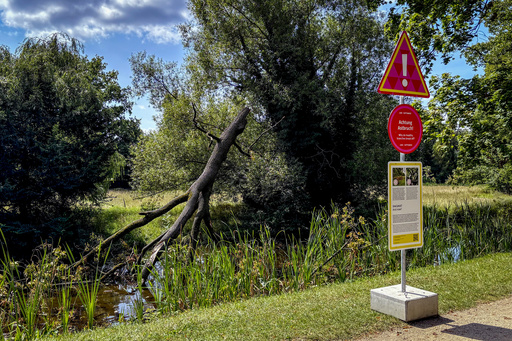In the heart of Potsdam, Germany, the lush park surrounding Sanssouci Palace, a UNESCO world heritage site, displays grandeur despite challenges faced by its trees due to climate change. Signs of distress like thinning crowns, fallen branches, and stripped bark show the impact of hot and dry summers, compounded by years of little rainfall. Other factors such as harsh sunlight, low humidity, storms, fungal infections, and new insect species are also contributing to the trees’ struggle.
Over the years, the park has lost a significant number of trees annually, with the count reaching 315 in 2020 before slightly decreasing. To raise awareness, an outdoor exhibition named “Re:Generation” by the Prussian Palaces and Gardens Foundation is showcasing the trees’ battle with climate change. Visitors can see firsthand the challenges faced by the trees, as well as potential solutions.
Despite the difficulties, some trees in the park, deemed “survival artists,” provide hope for the future. Gardeners aim to work with the park’s genetic material by collecting seeds from resilient older trees to grow new ones under similar harsh conditions in a dedicated nursery. The oldest trees in Sanssouci Park, approximately 300 years old, hold promise for adaptation and passing on their resilience to future generations.
While the native tree species in the park are struggling, introducing exotic species is not the solution due to Potsdam’s central European climate. Considering varieties of trees from regions like southeastern Europe with similar climate characteristics but resembling the existing trees at Sanssouci could be a potential pathway. Preserving the essence of the park with its current tree composition remains a priority for the park’s caretakers.
Sanssouci Palace, once the summer retreat of Prussian King Frederick II, boasts a rich history dating back to 1747. The expansive park spanning 300 hectares has nearly 60 gardeners and has been a UNESCO World Heritage site since 1990. The ongoing challenges faced by the park’s trees underscore the need for innovative strategies to safeguard its ecological balance for future generations.



